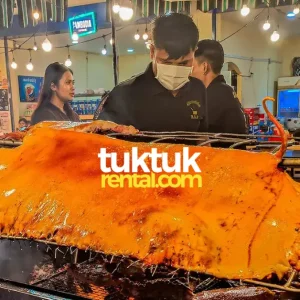A Cuisine Steeped in Time
The Essence of Khmer Flavor
Traditional Cambodian Dishes You Must Try
Fish Amok
Cambodia’s national dish, a silky, aromatic curry made with river fish, coconut milk, and yellow kroeung, steamed in banana leaves. It’s mild, creamy, and deeply fragrant. A dish that embodies Khmer balance and grace.
Samlor Korko
Known as “Cambodia’s everything soup,” it’s one of the oldest recipes in the country!!! A thick stew of vegetables, fish, and roasted rice powder, simmered in a kroeung paste. Every family has its own version, passed down through generations.
Lok Lak:
A French inspired stir-fry made with marinated beef, onions, and tomatoes, served with rice and a tangy lime-pepper dipping sauce. Simple yet perfectly seasoned. A reminder of Cambodia’s colonial past with a Khmer twist.
Nom Banh Chok (Khmer Noodles)
Breakfast for locals, comfort food for travelers. Fresh rice noodles topped with a green fish curry sauce, bean sprouts, cucumber, and banana blossom. It is fresh, light, and full of herbs.
Prahok Ktis:
A rich and savory dip made from prahok, minced pork, coconut milk, and kroeung. It is served with fresh vegetables. Don’t let the smell scare you; it’s a Cambodian favorite!



